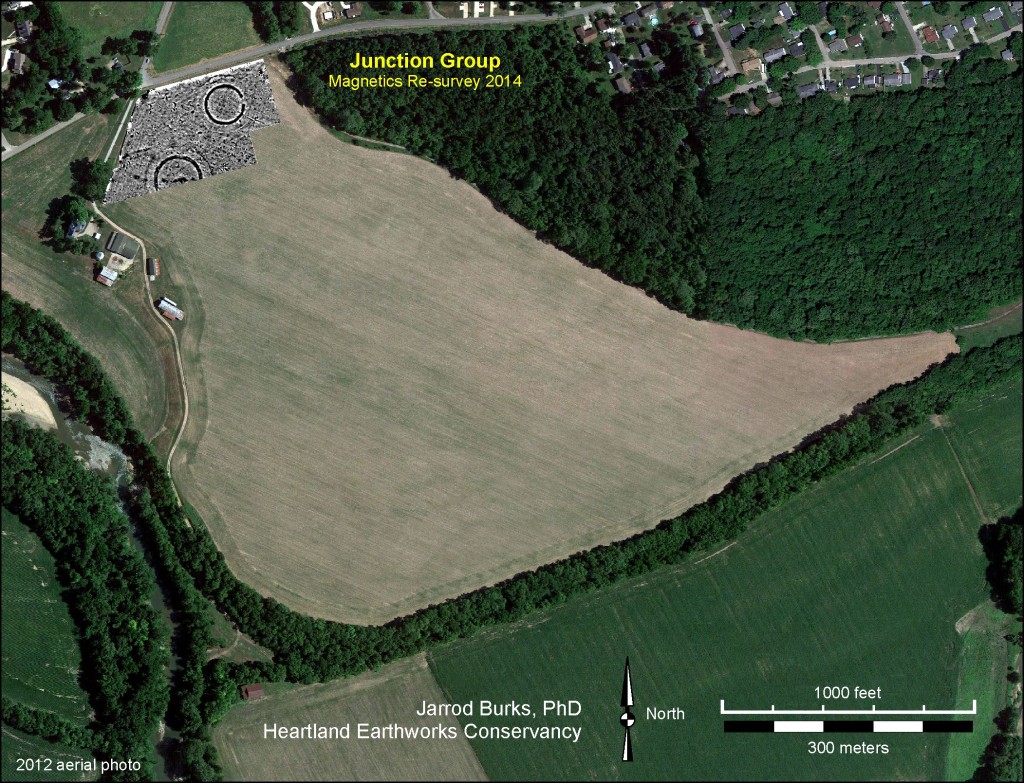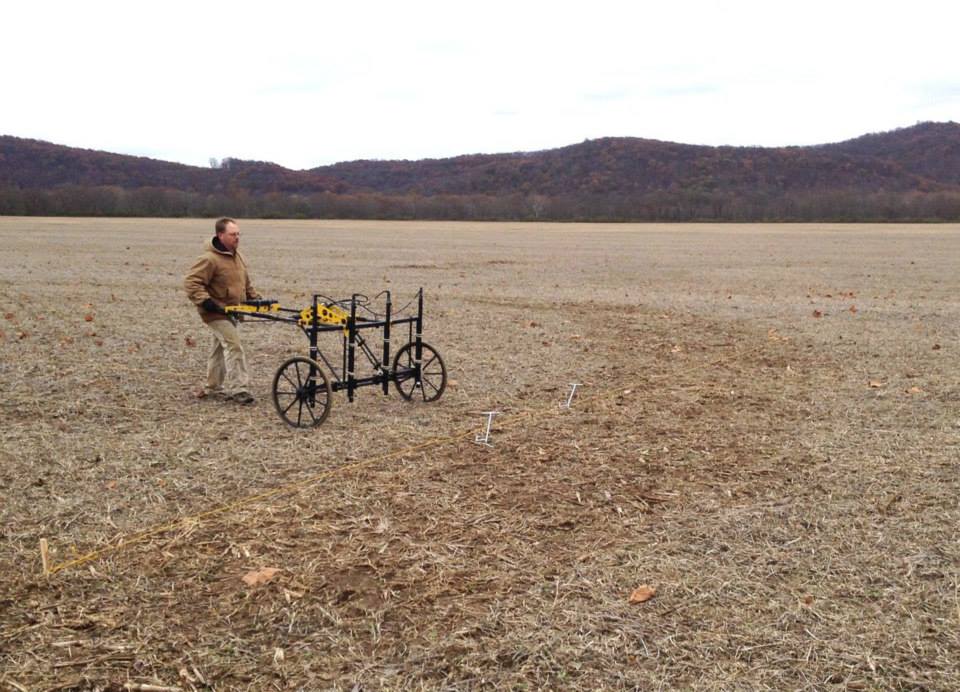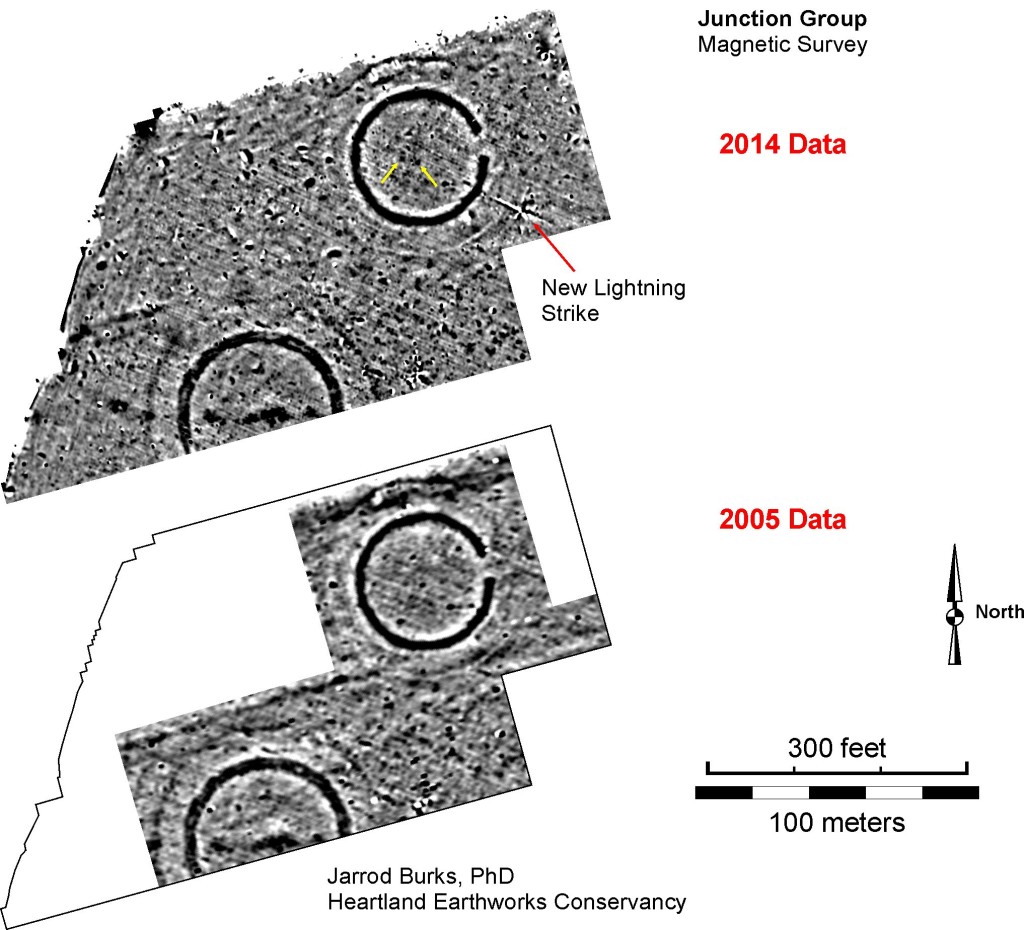Magnetic Re-Survey of the new Junction Group Archaeological Preserve
Guest Blogger: Dr. Jarrod Burks, Board President for Heartland Earthworks Conservancy
In November of 2014, with the final crop of soybeans harvested and the land on which the site sits finally protected, it was a perfect time for a magnetic resurvey at the Junction Group Archaeological Preserve. The newly created Junction Earthworks Archaeological Park and Nature Preserve near Chillicothe, Ohio, is now owned by The Archaeological Conservancy and jointly managed with Arc of Appalachia Preserve System, Heartland Earthworks Conservancy, and Rivers Unlimited. The Hopewell National Park, as part of the National Park Service, has also helped in many important ways, though they are not official part of the management team. The Junction Group archaeological site, likely part of the Hopewell culture, was built approximately 1800-2000 years ago. It belongs to a special class of earthwork sites consisting of numerous small geometric enclosures. It is perhaps the best preserved of these sites.
In 2005, the original survey was completed by Dr. Jarrod Burks, with the help of Dr. N’omi Greber and partial funding from Dr. Wesley Bernardini. Using a single, handheld magnetometer, it took a couple weeks and several weekends to complete that survey, which covered about 12-15 acres, and though fairly low in density the data were plenty sufficient to see the earthworks. The goal of the resurvey is to locate smaller features, such as pits and post holes associated with the earthworks. Many earthwork sites include these other kinds of features. And of course, lots of other Native Americans occupied this ground before and after the earthworks were built–so the new magnetic data will help locate these occupations as well. Jarrod is also running the new survey, but this time he is using an instrument with four magnetometers attached to a cart and the data he is collecting will be much higher density data. The eventual goal is to survey the entire 89 acre field containing the earthworks. Who knows, there could even be other enclosures out there just waiting to be discovered!
Figure 1
The results of the new magnetic survey at Junction after Day 2. So far the new survey has covered about 6-7 acres…just another 82 acres to go!
Figure 2
Jarrod Burks operating a Foerster Instruments 4-probe magnetometer system during the Junction Group Magnetic Re-Survey project. The higher density data being collected will help reveal small features, such as post holes and pit features (e.g., cooking pits, storage pits, burials, etc.). Knowing the locations of these features will help The Archaeological Conservancy and the preservation consortium manage the cultural resources at the site.
Figure 3
A detail view of the new 2014 magnetic data at Junction. The earthworks are pretty clear, but so too are other, smaller features (see the yellow arrows and the yellow dotted oval). Lots of other small magnetic signatures have also been detected. Most of these likely are iron objects (e.g., farm implement parts), magnetic rocks, bricks, and fragments of clay drainage pipes. All of these types of objects were observed on the surface during the magnetic survey. Farm fields can be magnetically busy places!
Figure 4
Here is a to-scale comparison between the 2005 and 2014 magnetic data. One of the biggest surprises since 2005 is the appearance of a strange new magnetic feature just off the edge of the northernmost circle. This is a lightning strike magnetic feature, and one caused by the horizontal flow of electrical current in the ground. Note which direction it seems to be pointing, northwest/southeast. If you look closely at the magnetic data, you will notice lots of other linear magnetic features trending in this direction as well. These are plow marks. The lightning strike feature is following one of these plow marks. This means that the lightning caused electricity to flow in the ground and it followed the plow mark, probably in the top foot of soil. This electricity permanently magnetized the ground creating the signature that is now detectable. Detecting lightning strikes can be pretty rare, depending on your geographic location, and catching one almost in the act of becoming is really rare!








